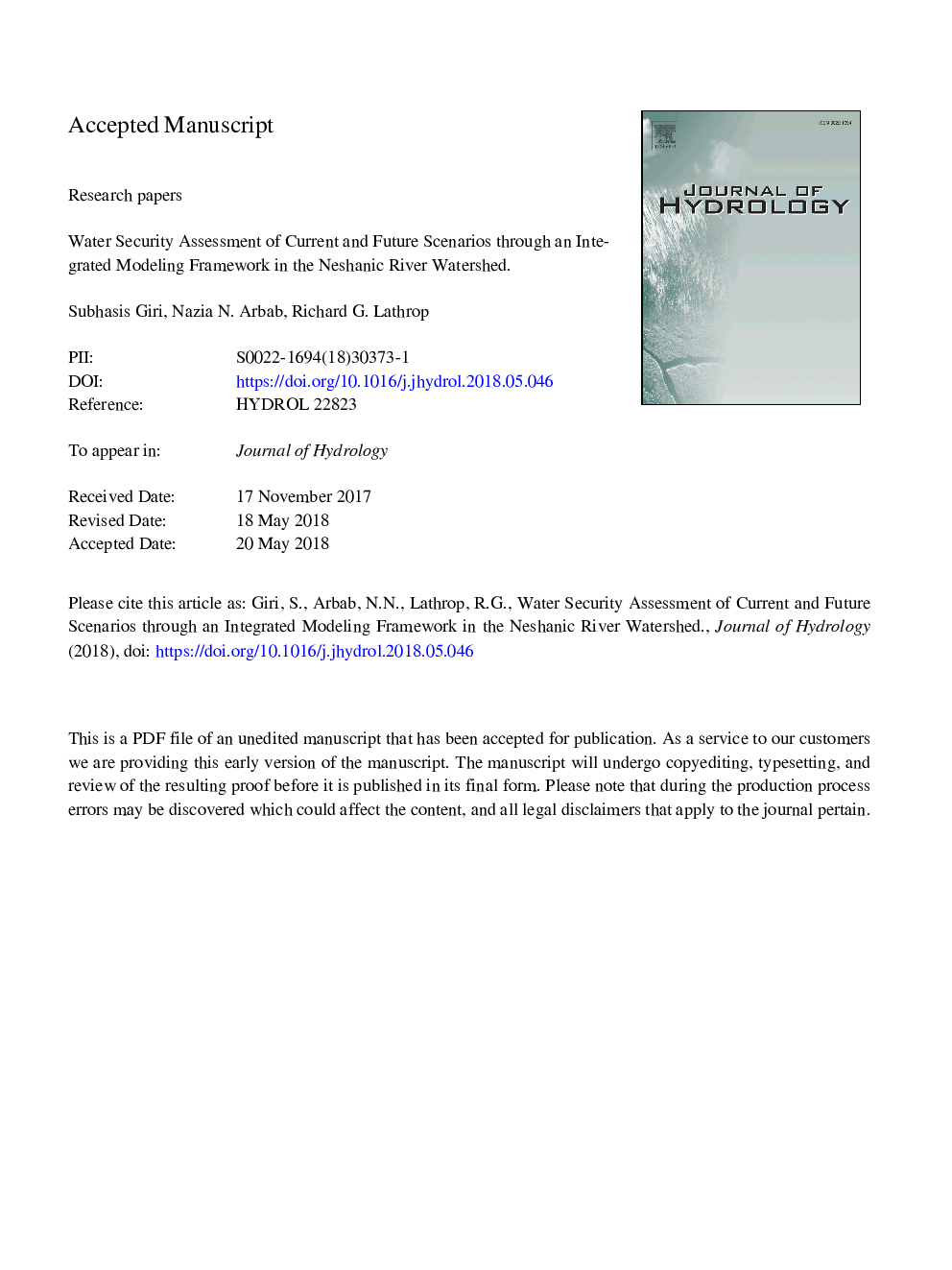| Article ID | Journal | Published Year | Pages | File Type |
|---|---|---|---|---|
| 8894626 | Journal of Hydrology | 2018 | 56 Pages |
Abstract
Water security assessment based on the concept of blue versus green water is becoming widely accepted globally. Blue water is the combination of surface runoff and deep aquifer recharge while green water is the summation of evapotranspiration and soil water content (i.e. mediated by plants). Due to the tight coupling between land use and the partitioning of blue and green water within a watershed, an integrated geospatial modeling framework that links land use and watershed hydrological processes is needed to predict the consequences of future land use change on blue versus green water security. By loosely coupling an agent based probabilistic land use change model with a hydrologic model, we investigated the consequences of present trends of urban growth to identify potential future hotspots of hydrological change across a watershed in central New Jersey undergoing suburbanization. The agent based probabilistic model, working at the scale of land ownership parcels, predicted that future urban development would be the result of forest, rather than farm land conversion. Using existing zoning maps, the housing unit density and human population of the urban growth areas was estimated. A consequence of the loss of forest land and increasing impervious surface leading was higher blue water but lower green water. While no severe blue water scarcity was observed, an increasing green water scarcity was found in some study area sub-basins. Such information will aid watershed managers' and policymakers' effort in sustainably managing water resources under changing land use and climate.
Keywords
Related Topics
Physical Sciences and Engineering
Earth and Planetary Sciences
Earth-Surface Processes
Authors
Subhasis Giri, Nazia N. Arbab, Richard G. Lathrop,
